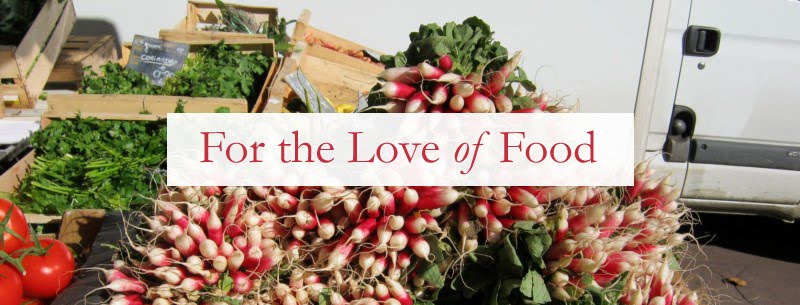I couldn't choose--and then I realized that I didn't have to. Instead, I made a relatively straightforward ratatouille which I finished with the traditional caponata flavorings of olives, capers and vinegar. I got the best of both worlds in this dish: the sweet/sour tang that the combination of slow-cooked onions and vinegar lends to a caponata, as well as the warm, earthy mellowness with which bell peppers and tomatoes infuse a ratatouille. Call me a flip-flopper; I don't mind. Isn't the adapting and blending of traditions what cooking is all about?
Oh, and I almost forgot: I happened to enjoy a nice, rare, sliced sirloin steak alongside my dish. It was delicious, especially when eaten with a little forkful of the vegetables on top. But, as you can clearly see, it took a backseat to the eggplant.

Warm Mediterranean Vegetables (Ratatouille/Caponata)
Serves 4
1. Preheat the oven to 375°.
2. Cut 1 small eggplant, 1 large zucchini, and 1 large red bell pepper into medium-sized chunks. Place them on a rimmed baking sheet and toss them with olive oil, salt and pepper. Roast in the oven, stirring occasionally, until they are browned and quite soft, about 20 minutes. Shut off the oven.
3. Over a medium flame, heat about 2 tbsp. of olive oil in a large, deep, heavy-bottomed pan. Add 1 large red onion, cut into a medium dice, and some salt. About 2 minutes later, add 3 cloves of garlic, chopped. Cook, stirring, until onions are soft and sweet, about 10 minutes.
4. Add 3 - 4 ripe plum tomatoes, cut into medium-sized chunks, to the pan. Cook, stirring occasionally, until the tomatoes have released some of their liquid and begun to break down. Add the roasted vegetables, cover the pan partially, and reduce the heat to low. Cook until the vegetables are completely soft, about 5 - 10 more minutes.
5. Shut off the heat and add a small handful of olives, pitted and chopped, as well as a small handful of capers, rinsed and drained. Add about a tbsp. of red wine vinegar, stir to combine, and check for seasoning, adding more salt, pepper and vinegar as needed. Garnish with chopped fresh parsley.







